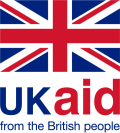You are here
Lessons Learned Story: Moving knowledge across boundaries
Description: Organizations are organized — that is, they are split into divisions and branches, and they maintain an identity separate from other organizations. Those divisions allow specialization and development of expertise, but sometimes, they trap knowledge.
Recent internal reorganizations at the World Bank have moved staff away from global centers to focus on country or regional concerns. If anything, this has made it more likely that forest knowledge could be trapped in one branch of the larger organization.
With its global outlook, PROFOR can play an important role as a knowledge bridge within the World Bank. The governance work illustrates this. PROFOR has disseminated its governance assessment tool across the World Bank’s regional boundaries (into Africa, East Asia, and Europe and Central Asia regions) and institutional boundaries (into the Forest Carbon Partnership Facility and the Forest Investment Program).
The India watersheds case illustrates that the Bank also moves knowledge when individuals transfer it from one region to another. Although this spread of expertise is a recognized incidental benefit of rotating staff, the resulting transfer is a matter of happenstance, with no guarantee that essential knowledge is available where it is needed most. PROFOR can share knowledge purposefully, and it can do it faster and more widely than the Bank could do by staff transfer alone.
PROFOR can also bridge boundaries between the World Bank and other organizations. The governance work has led the World Bank and FAO to use the same definition of forest governance, and the use of that definition is spreading to other institutions. Before this work began, most people equated forest governance with illegal logging and law enforcement, and perhaps also land tenure. Now policymakers and practitioners also think of it as embracing public expenditure, well-functioning markets, public participation, transparency, effective and efficient administration, good use of technology, and so forth. This has helped understand interconnections among these components and identify a bigger suite of interventions. Widespread adoption of this broader sense stems directly from PROFOR work, in partnership with FAO, UN-REDD, and others.
Discussion: Part of PROFOR’s knowledge transfer is strategic and intentional, but part of it is a side effect of PROFOR’s mode of operation. When looking for needs to fill, PROFOR naturally tends to take advantage of the existing knowledge base and apply knowledge that it has developed in earlier projects.
PROFOR recognizes that it could do better in managing its own knowledge and in serving as a bridge to allow better knowledge transfer. It has been examining its knowledge management practices, considering the best way to shape a knowledge management strategy, and weighing options that might transfer knowledge where it is most needed. These include a virtual “help desk” offering information on demand about key PROFOR’s topics, such as forest governance; cutting-edge dissemination vehicles such as interactive e-books; “peer counseling” sessions where development practitioners from across the Bank or other institutions could informally bring problems and discuss possible solutions; and support to communities of practice using social media to spur communication.








